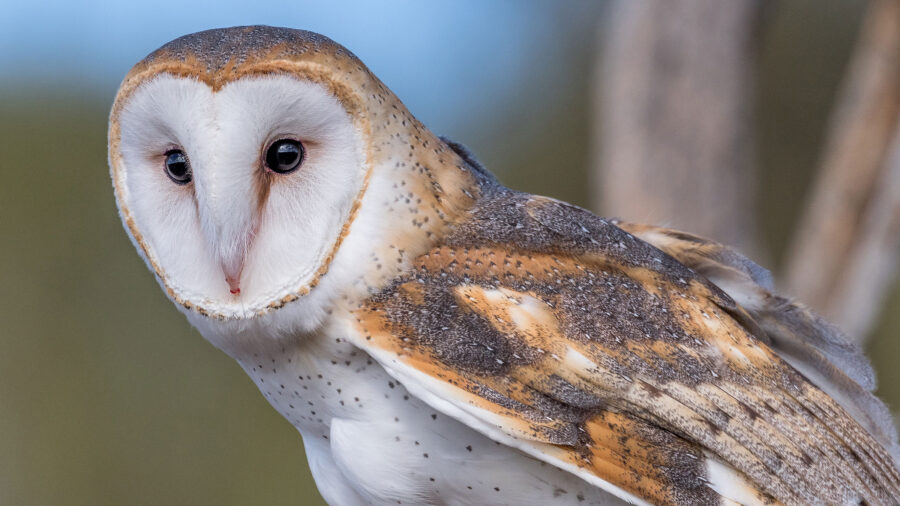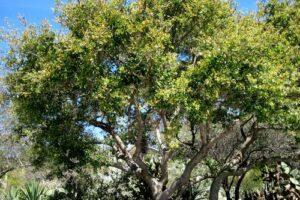From the Audubon society
| Conservation status | In recent decades, has declined slightly in some regions, drastically in others. Numbers are apparently stable or increasing in a few sites. May be helped in some areas by provision of nest boxes. |
|---|---|
| Family | Barn Owls |
| Habitat | Woodlands, groves, farms, barns, towns, cliffs. Typically in open or semi-open country in lowlands. May nest in forest or city if nearby area has good open foraging territory, such as farmland, marsh, prairie, desert. |
With its ghostly appearance, rasping shrieks, and habit of roosting in such places as church belfries, this bird has attracted much superstition. However, it is really a good omen for farmers who find it in their barns, for it preys chiefly on mice and rats. Discovered in its daytime retreat, the Barn Owl bobs its head and weaves back and forth, peering at the intruder. At night it is often heard calling as it flies high over farmland or marshes. One of the most widespread of all landbirds, found on six continents and many islands.
Feeding Behavior
Hunts at night, seldom by day. Seeks prey mostly by flying low over open ground, watching and listening; sometimes hunts by flying down from a perch. Has excellent vision in low light levels, and hearing is so precise that it can strike prey in total darkness.
Eggs
Usually 3-8, sometimes 2-12 or even more. Whitish, sometimes becoming nest-stained. Incubation is by female only, 29-34 days; male brings food to female during incubation. Young: Female remains with young at first and broods them while they are small; male brings food, female feeds it to young. After about 2 weeks, female hunts also. Age of young at first flight roughly 55-65 days. Young return to sleep at nest or nearby for several more weeks. 1-2 broods per year, sometimes 3.
Young
Female remains with young at first and broods them while they are small; male brings food, female feeds it to young. After about 2 weeks, female hunts also. Age of young at first flight roughly 55-65 days. Young return to sleep at nest or nearby for several more weeks. 1-2 broods per year, sometimes 3.
Diet
Mostly rodents. Feeds heavily on voles; also takes various kinds of mice, small rats, shrews, young rabbits, other mammals. Eats very small numbers of birds, lizards, insects, rarely frogs or even fish.
Nesting
In courtship, male performs display flight, including loud wing-claps; male feeds female. Nest: Uses sites in caves and hollow trees, also many artificial sites such as barn lofts, church steeples, abandoned houses, dry wells, crevices under bridges, nest boxes. Where no existing cavities available, will dig holes in dirt banks. No real nest built, but will arrange debris into crude depression.
Interesting research articles
Download
Guides
Related videos
Useful information
What to do if you find a hurt barn owl?
Visit this websites for more information:
https://crc.vetmed.ucdavis.edu/rescue-rehabilitation
https://www.internationalowlcenter.org/injuredowls.html
https://cawildlife.org/animal-resources/medical-emergency/
Raptors of California
The word “raptor” is the term used for a group of birds consisting of hawks, falcons, kites, eagles, vultures and owls. Raptors, also referred to as “birds of prey”, are a valuable resource to the State of California, and therefore all raptors are protected under State law (See Fish and Game Code, Sections 3503, 3503.5, 3505 and 3513, and California Code of Regulation, Title 14, Sections 251.1, 652 and 783-786.6). There are over 30 species of raptors that inhabit California at some point in their life cycle. Below are links to various raptor species pages where detailed information on each is given.
Fully Protected Raptors
- Bald Eagle
- Golden Eagle
- White-tailed Kite
- California Condor
- Peregrine Falcon
Raptor Species of Special Concern
- Northern Goshawk (PDF)
- Northern Harrier (PDF)
- California Spotted Owl (PDF)
- Burrowing Owl (PDF)
- Short-eared Owl (PDF)
- Long-eared Owl (PDF)
California Bird Species of Special Concern
State Threatened and Endangered Raptors
- California Condor
- Bald Eagle
- Swainson’s Hawk
- Northern Spotted Owl
- Elf Owl
- Great Grey Owl
Threatened and Endangered Birds
Other California Raptors
- Cooper’s Hawk
- Sharp-shinned Hawk
- Ferruginous Hawk
- Osprey
- Harris’ Hawk
- Merlin
- Prairie Falcon
- Red-tailed Hawk
- Red-shouldered Hawk
- American Kestrel
- Broad-winged Hawk
- Rough-legged Hawk
- Great-horned Owl
- Barn Owl
- Screech Owl
- Barred Owl
- Turkey Vulture
Contact
Carie.Battistone@wildlife.ca.gov




